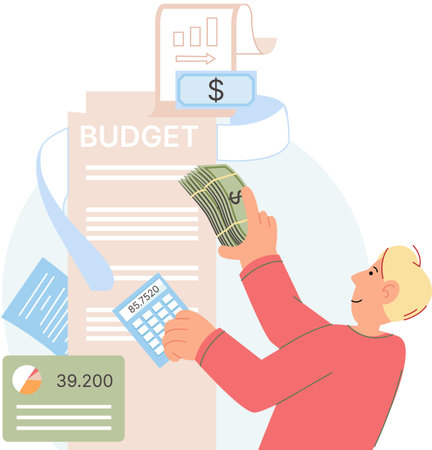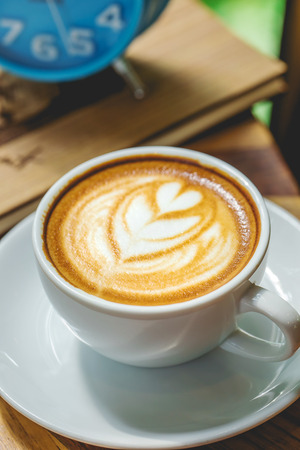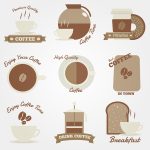1. Initial Startup Costs
Starting a coffee shop in the U.S. can be an exciting venture, but it’s important to understand the one-time expenses that come with launching your business. These initial startup costs can vary based on location, size of the shop, and concept (e.g., specialty café vs. grab-and-go), but here’s a breakdown of the most common areas where youll need to invest upfront.
Leasing a Space
Renting a commercial space is usually one of the biggest upfront costs. Lease prices depend heavily on the city and neighborhood. In high-traffic urban areas like New York or San Francisco, rent can be significantly higher than in smaller towns.
| Location Type | Estimated Monthly Rent |
|---|---|
| Small Town/Main Street | $1,000 – $3,000 |
| Suburban Strip Mall | $2,000 – $5,000 |
| Urban Downtown Area | $4,000 – $12,000+ |
Renovation and Build-Out Costs
Once you’ve secured a lease, most spaces will require renovations to meet health codes and match your brand aesthetic. This includes plumbing for espresso machines, installing counters and seating, lighting upgrades, and more.
| Type of Renovation | Estimated Cost Range |
|---|---|
| Basic Cosmetic Upgrades (paint, decor) | $5,000 – $15,000 |
| Full Build-Out (plumbing, electrical, flooring) | $20,000 – $100,000+ |
Coffee Equipment Purchase
Your equipment will be one of your most critical investments. Quality espresso machines and grinders are essential for delivering great coffee consistently. Other must-haves include brewing equipment, refrigerators, blenders (for cold drinks), and point-of-sale systems.
| Equipment Type | Estimated Cost Range |
|---|---|
| Espresso Machine (commercial-grade) | $8,000 – $20,000+ |
| Coffee Grinders (2-3 units) | $2,000 – $4,500 |
| Brew Station & Drip Coffee Makers | $1,500 – $5,000 |
| Refrigeration Units & Ice Maker | $2,000 – $6,000 |
| POS System & Register Setup | $1,200 – $3,000 |
| Sinks & Dishwashing Station (health code compliant) | $1,500 – $4,000 |
Initial Inventory and Supplies
You’ll also need to stock up on ingredients and supplies before opening day. This includes coffee beans (both house blends and specialty roasts), milk alternatives, syrups, pastries (if applicable), cups/lids/straws/napkins, cleaning products, and more.
| Inventory Type | Estimated Initial Cost |
|---|---|
| Coffee Beans & Beverages Ingredients | $1,500 – $5,000+ |
| Cups/Lids/Utensils/Napkins/etc. | $500 – $2,500 |
| Baked Goods/Pastries Inventory (if applicable) | $1,000 – $3,000+ |
| Coffee Filters/Cleaning Supplies/Misc. | $300 – $1,200 |
Total Estimated Startup Cost Range:
| Description | Total Estimate Range (Low-End to High-End) |
|---|---|
| Total Initial Startup Costs (All Categories Combined) | $80,000 – $300,000+ |
The actual amount you’ll spend depends on your business model—whether you’re opening a small kiosk or a full-service café—and how much renovation is needed. Planning ahead with a clear budget will help you avoid surprises as you move from dream to grand opening.
2. Ongoing Operating Expenses
Once your coffee shop is up and running, the initial setup costs are behind you—but the day-to-day expenses begin. These ongoing operating expenses are essential for keeping your business sustainable and profitable. Let’s break down the most common recurring monthly costs that coffee shop owners in the U.S. should expect.
Rent or Lease Payments
Your location plays a major role in how much youll pay for rent. In high-traffic urban areas, rent can easily be one of your biggest monthly expenses. On average, coffee shop rent in the U.S. can range from $1,500 to over $10,000 per month depending on square footage and location.
Utilities
Running a coffee shop requires electricity, water, gas, internet, and possibly waste management services. Heres a rough breakdown:
| Utility | Estimated Monthly Cost |
|---|---|
| Electricity | $300 – $800 |
| Water & Sewer | $100 – $300 |
| Gas (for equipment) | $50 – $150 |
| Internet & Phone | $75 – $200 |
| Trash Removal | $50 – $100 |
Labor Costs
Your staff is the heart of your operation—from baristas and cashiers to shift managers. Labor costs include wages, payroll taxes, and possibly benefits if youre offering them. In many states, minimum wage laws will impact how much you need to budget for staff each month.
| Position | Average Hourly Rate (U.S.) |
|---|---|
| Barista | $12 – $18/hour |
| Shift Lead | $15 – $22/hour |
| Manager | $18 – $25/hour or salary-based |
Coffee and Supply Inventory
This includes coffee beans, milk, syrups, cups, lids, napkins—everything you need to serve customers. These costs vary depending on volume and product quality but generally fall between $2,000 to $6,000 per month for small to medium-sized shops.
Common Monthly Supply Costs:
| Item Category | Estimated Monthly Cost |
|---|---|
| Coffee Beans & Ingredients | $1,500 – $4,000 |
| Cups, Lids & Sleeves | $300 – $1,000 |
| Cleaning Supplies & Paper Goods | $200 – $500 |
Maintenance and Equipment Repairs
Coffee machines, grinders, refrigerators—these are all critical pieces of equipment that require regular maintenance to stay in good working condition. Unexpected repairs can also add up quickly. Budgeting around $200 to $500 per month for maintenance is a smart move.
Tip:
Consider setting aside a small reserve fund each month specifically for emergency repairs or replacements. It’ll save you from stress when something breaks unexpectedly.
The Big Picture: Monthly Expense Overview
| Expense Category | Estimated Monthly Range (USD) |
|---|---|
| Rent/Lease | $1,500 – $10,000+ |
| Utilities (All) | $575 – $1,550+ |
| Labor Costs | $7,000 – $15,000+ |
| Supplies & Inventory | $2,000 – $6,000+ |
| Maintenance/Repairs | $200 – $500+ |
Understanding these recurring expenses helps you plan ahead and maintain healthy profit margins. A clear view of your monthly obligations also makes it easier to adjust pricing or spending as needed to keep your coffee shop thriving.

3. Licensing, Permits, and Insurance
Before you open your coffee shop doors to customers, there are a few legal and safety requirements you must meet. These include obtaining the right licenses, permits, and insurance coverage to operate legally in the U.S. The specific requirements can vary depending on your city and state, but here are the most common ones youll need to prepare for:
Health Permits and Inspections
If youre serving food or beverages (which you definitely are), youll need a health permit from your local health department. An inspector will check that your equipment, storage, cleanliness, and food handling procedures meet public health standards. Youll also need regular inspections to keep this permit valid.
Business Licenses
A general business license is required to legally operate any business in the U.S. You’ll typically get this from your city or county government. This license lets your local government know what kind of business you’re running and ensures youre registered for tax purposes.
Food Service Certifications
In most states, at least one person on your team—usually the owner or manager—must complete a food safety certification course like ServSafe. This proves that someone at your shop understands how to safely handle and serve food and drinks.
Liability Insurance
Insurance protects both you and your customers. At a minimum, youll want general liability insurance, which covers things like customer injuries or property damage. Many landlords also require proof of insurance before leasing out commercial space.
Typical Licensing & Insurance Costs
| Requirement | Estimated Cost | Notes |
|---|---|---|
| Health Permit | $100 – $1,000+ | Depends on location and kitchen setup |
| Business License | $50 – $400 | City or county-specific fees apply |
| Food Safety Certification | $100 – $300 per person | Courses like ServSafe; may need renewal every 3-5 years |
| General Liability Insurance | $500 – $2,000/year | Covers accidents, injuries, property damage |
| Workers’ Compensation Insurance | Varies by state & staff size | Mandatory in most states if you hire employees |
Tip:
Check with your local Small Business Administration (SBA) office or city hall—they often have helpful checklists for new food businesses that include all required permits and licenses for your area.
4. Marketing and Branding Costs
Marketing and branding are essential for the success of any coffee shop, especially in a competitive market like the U.S. Even with great coffee and an inviting space, your business needs visibility to attract customers. Allocating a portion of your startup budget to marketing efforts can help build brand awareness and customer loyalty from day one.
Local Marketing Efforts
Start by promoting your coffee shop within the local community. This can include flyers, posters, sponsoring neighborhood events, or collaborating with nearby businesses. These grassroots efforts are often cost-effective and help you connect directly with your target audience.
Signage
Your stores signage is one of the first impressions customers get. Investing in quality outdoor and indoor signs ensures your coffee shop stands out and looks professional. Budgeting for design, materials, and installation is key.
Estimated Signage Costs
| Type | Estimated Cost (USD) |
|---|---|
| Outdoor Storefront Sign | $1,000 – $5,000 |
| Indoor Menu Boards | $200 – $1,000 |
| A-Frame Sidewalk Sign | $100 – $300 |
Website Development
A user-friendly website adds credibility to your brand and provides essential information like hours, location, menu, and online ordering if available. You can choose between hiring a web developer or using DIY platforms like Wix or Squarespace depending on your budget.
Estimated Website Development Costs
| Option | Estimated Cost (USD) |
|---|---|
| DIY Website Builder (Annual) | $200 – $500 |
| Professional Developer (One-time) | $1,500 – $5,000+ |
Social Media Marketing
Social media platforms like Instagram, Facebook, and TikTok are powerful tools for reaching new customers and engaging with your community. Consider budgeting for content creation (photos/videos), paid ads, and possibly hiring a part-time social media manager.
Monthly Social Media Budget Range:
- Content Creation: $200 – $800
- Paid Ads: $100 – $500+
- Social Media Management: $300 – $1,000 (optional)
Loyalty Programs
Loyalty programs encourage repeat visits and help build long-term customer relationships. Whether youre using punch cards or digital apps like Square Loyalty or Toast Loyalty, these programs usually require a small monthly fee but can boost sales significantly.
Estimated Loyalty Program Costs
| Platform Type | Estimated Monthly Cost (USD) |
|---|---|
| Punch Card System (Printed) | $20 – $50 for initial print run |
| Digital Loyalty App (e.g., Square) | $45 – $100/month depending on features |
Allocating funds to marketing and branding is not just an expense—its an investment in building a strong presence in your local market. With strategic planning and smart budgeting, you can create a memorable brand that attracts loyal customers every day.
5. Financial Planning and Funding Options
Opening a coffee shop in the U.S. involves more than just finding the perfect location and designing a cozy interior. A solid financial plan is key to setting your business up for success. This includes creating realistic budgets, forecasting cash flow, and exploring different ways to fund your startup.
Creating a Realistic Financial Plan
A financial plan helps you understand how much money you need to start and run your coffee shop. It should include both startup costs and ongoing operational expenses. Break down your budget into categories like equipment, rent, supplies, payroll, marketing, and utilities. Here’s an example of what a basic startup budget might look like:
| Expense Category | Estimated Cost (USD) |
|---|---|
| Espresso Machine & Coffee Equipment | $15,000 – $25,000 |
| Furniture & Interior Design | $10,000 – $20,000 |
| Lease/Rent (First 3 Months) | $6,000 – $12,000 |
| Licenses & Permits | $500 – $2,500 |
| Initial Inventory (Beans, Milk, Cups, etc.) | $3,000 – $5,000 |
| POS System & Software | $1,500 – $3,000 |
| Marketing & Branding | $2,000 – $5,000 |
Cash Flow Forecasting
A cash flow forecast projects how much money will come in and go out of your business monthly. This helps you plan ahead for slow months or unexpected expenses. Start by estimating your monthly income based on sales projections and subtract expected expenses like rent, salaries, inventory restocking, and utilities.
Basic Monthly Cash Flow Example:
| Description | Amount (USD) |
|---|---|
| Total Sales Revenue | $18,000 |
| – Rent | $2,500 |
| – Payroll | $6,000 |
| – Supplies & Inventory | $4,000 |
| – Utilities & Internet | $600 |
| – Marketing Expenses | $800 |
| = Estimated Net Cash Flow | $4,100 |
This type of forecast helps ensure youre not overspending and can keep operations running smoothly.
Funding Your Coffee Shop: Exploring Options
You don’t have to finance everything out of pocket. There are several funding options available to small business owners in the U.S.:
#1 Small Business Loans
Banks and credit unions offer loans specifically for small businesses. The U.S. Small Business Administration (SBA) also backs loans with favorable terms for startups.
#2 Personal Savings or Family Support
If you’ve been saving up or have family members willing to invest in your dream café, this can be a straightforward way to avoid interest payments or giving up equity.
#3 Investors or Business Partners
You may find private investors interested in backing your coffee shop in exchange for a share of profits or ownership. Be sure to clearly define roles and expectations from the start.
#4 Crowdfunding Platforms
Sites like Kickstarter or GoFundMe allow you to raise funds from supporters who believe in your concept. Offer perks like free drinks or merchandise in return.
The Bottom Line on Planning Ahead
A strong financial foundation is critical when opening a coffee shop. By budgeting carefully, forecasting cash flow accurately, and choosing the right funding sources, you’ll be better prepared for both opportunities and challenges that come with running your own café.


